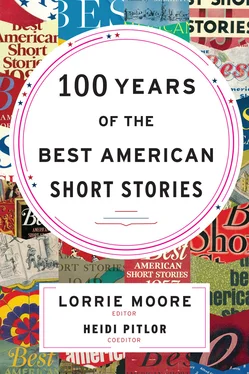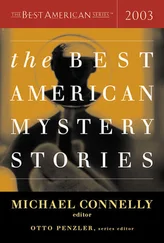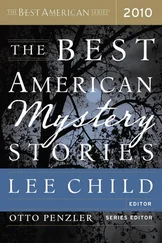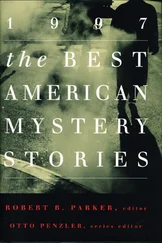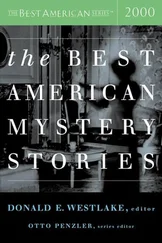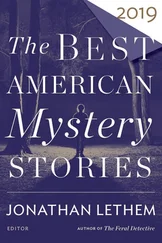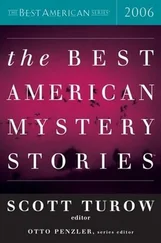Like Foley, Kenison kept a file card for every story she read: “Title, author, magazine, date, plot synopsis, opinion. I ripped out and filed the stories I liked most and piled the magazines I was done with into boxes in the basement to make room in my small home office for the next mail delivery. Failing to stay on top of the tide was to drown in unread literary journals.”
The 1990s saw a return to straight realism in literary fiction. Kenison noted that “this fiction was largely rooted in the middle range of the American experience — a critic might have judged it ‘safe,’ a reader might have gratefully called it a return to tradition, or to our roots.” These were also the years in which annual sales of The Best American Short Stories hit their peak. Kenison guessed that this return to the mainstream “can be seen as a natural response to the antirealism of the late sixties and seventies, the nonlinear, stylistically and structurally experimental fiction of the seventies, the minimalism and metafiction of the eighties. American writers will always experiment, they will continue to nudge at the boundaries of the form, they will try anything once — but the one generalization I’d venture to make is that realism was and still is the bedrock of our literature.”
Many short stories remained topical, although concerns were changing. The faltering state of our natural environment was addressed by Rick Bass, while humankind’s relationship to our wilderness was explored by Annie Proulx and T. C. Boyle. Stories by Jamaica Kincaid, Akhil Sharma, and Lan Samantha Chang explored rituals of family and love in other countries. Advances in technology crept into short fiction as well; the Internet, e-mail, and cell phones began to make appearances. Stories by realists such as Mary Gordon and Antonya Nelson were published beside work by more voice-driven writers such as Denis Johnson and Junot Díaz. The shadowy line between humor and desolation was explored with no small amount of irony by writers like Lorrie Moore, Tim Gautreaux, and Thom Jones.
In 1996 Kenison noted the evaporation of federal arts funding and the threat of technology to readers’ leisure time. She began reading fiction on the Internet in 1997: “As I click from one Web site to another, I feel rather like a dowser, my restless mouse the divining rod. There are now scores of electronic magazines publishing literary fiction.” There was a new dilemma for editors of print literary journals: to remain print or to migrate online?
As the turn of the century approached, Kenison worked with John Updike to assemble The Best American Short Stories of the Century . She said, “It was very striking to me as I began to read the early collections, first of all what a different world it was in 1915… John Updike said when he was just starting out he supported his family just writing short stories for The New Yorker . And that has changed. I don’t think we’ll ever get back there… It’s been a generation since anybody supported themselves writing short stories for magazines.”
1991ALICE MUNRO. Friend of My Youthfrom The New Yorker
ALICE MUNRO was born in Wingham, Ontario, in 1931 and raised on a fox farm. She attended the University of Western Ontario, where she published her first story, “The Dimensions of a Shadow.”
Munro’s first book, a collection of stories titled Dance of the Happy Shades , was awarded Canada’s Governor General’s Award. Munro went on to publish Lives of Girls and Women and Who Do You Think You Are? , which won another Governor General’s Literary Award.
Munro’s first appearance in The Best American Short Stories came in 1979 with a story titled “Spelling.” The guest editor that year, Joyce Carol Oates, wrote, “In earlier works, Munro brought to near perfection the kind of story that summed up a life in carefully chosen scenes; here her tone is one of scrupulous meanness… Life is reduced to a gesture or two, and emotion is withheld.”
Munro is known for her clarity of language and acute psychological realism. Many refer to her as “a Canadian Chekhov.” Her stories are often set in small towns, where characters must reconcile societal demands with moral or emotional ambitions. These stories tell of small but critical occurrences that raise profound questions for both her characters and her readers.
In 2013 Munro, cited as a “master of the contemporary short story,” was awarded the Nobel Prize in Literature. She is the first Canadian and the thirteenth woman to receive the Nobel Prize in Literature.
Munro has become a regular contributor to The Best American Short Stories . Her work has appeared in the series more times than that of Hemingway and Faulkner combined. She currently resides in Clinton, near her childhood home in southwestern Ontario.
★
I USED TO DREAM about my mother, and though the details in the dream varied, the surprise in it was always the same. The dream stopped, I suppose because it was too transparent in its hopefulness, too easy in its forgiveness.
In the dream I would be the age I really was, living the life I was really living, and I would discover that my mother was still alive. (The fact is, she died when I was in my early twenties and she in her early fifties.) Sometimes I would find myself in our old kitchen, where my mother would be rolling out pie crust on the table, or washing the dishes in the battered cream-colored dishpan with the red rim. But other times I would run into her on the street, in places where I would never have expected to see her. She might be walking through a handsome hotel lobby, or lining up in an airport. She would be looking quite well — not exactly youthful, not entirely untouched by the paralyzing disease that held her in its grip for a decade or more before her death, but so much better than I remembered that I would be astonished. Oh, I just have this little tremor in my arm, she would say, and a little stiffness up this side of my face. It is a nuisance but I get around.
I recovered, then, what in waking life I had lost — my mother’s liveliness of face and voice before her throat muscles stiffened and a woeful, impersonal mask fastened itself over her features. How could I have forgotten this, I would think in the dream — the casual humor she had, not ironic but merry, the lightness and impatience and confidence. I would say that I was sorry I hadn’t been to see her in such a long time — meaning not that I felt guilty but that I was sorry I had kept a bugbear in my mind, instead of this reality — and the strangest, kindest thing of all to me was her matter-of-fact reply.
Oh, well, she said, better late than never. I was sure I’d see you someday.
When my mother was a young woman with a soft, mischievous face and shiny, opaque silk stockings on her plump legs (I have seen a photograph of her, with her pupils), she went to teach at a one-room school, called Grieves’ School, in the Ottawa Valley. The school was on a corner of the farm that belonged to the Grieves family — a very good farm for that country. Well-drained fields with none of the Precambrian rock shouldering through the soil, a little willow-edged river running alongside, a sugarbush, log barns, and a large, unornamented house whose wooden walls had never been painted but were left to weather. And when wood weathers in the Ottawa Valley, my mother said, I do not know why this is, but it never turns gray — it turns black. There must be something in the air, she said. She often spoke of the Ottawa Valley, which was her home — she had grown up about twenty miles away from Grieves’ School — in a dogmatic, mystified way, emphasizing things about it that distinguished it from any other place on earth. Houses turn black, maple syrup has a taste no maple syrup produced elsewhere can equal, bears amble within sight of farmhouses. Of course, I was disappointed when I finally got to see this place. It was not a valley at all, if by that you mean a cleft between hills; it was a mixture of flat fields and low rocks and heavy brush and little lakes — a scrambled, disarranged sort of country with no easy harmony about it, not yielding readily to any description.
Читать дальше
